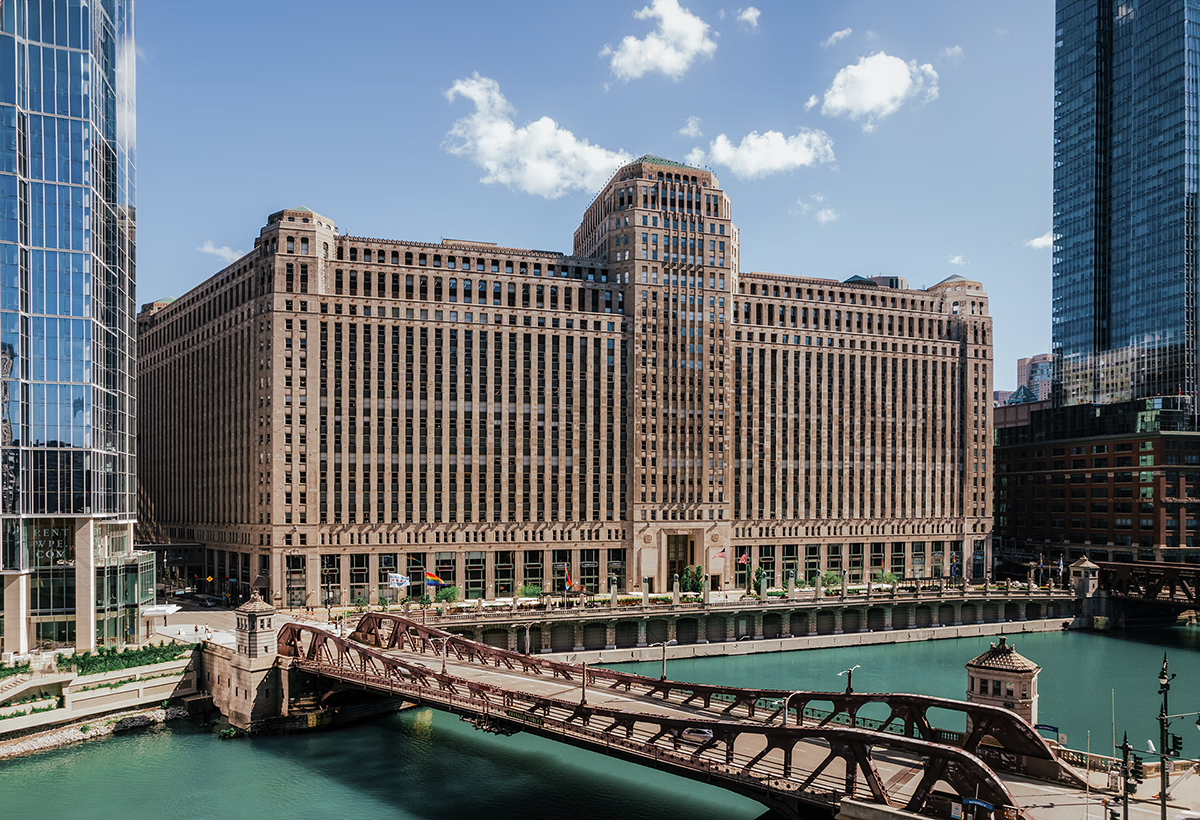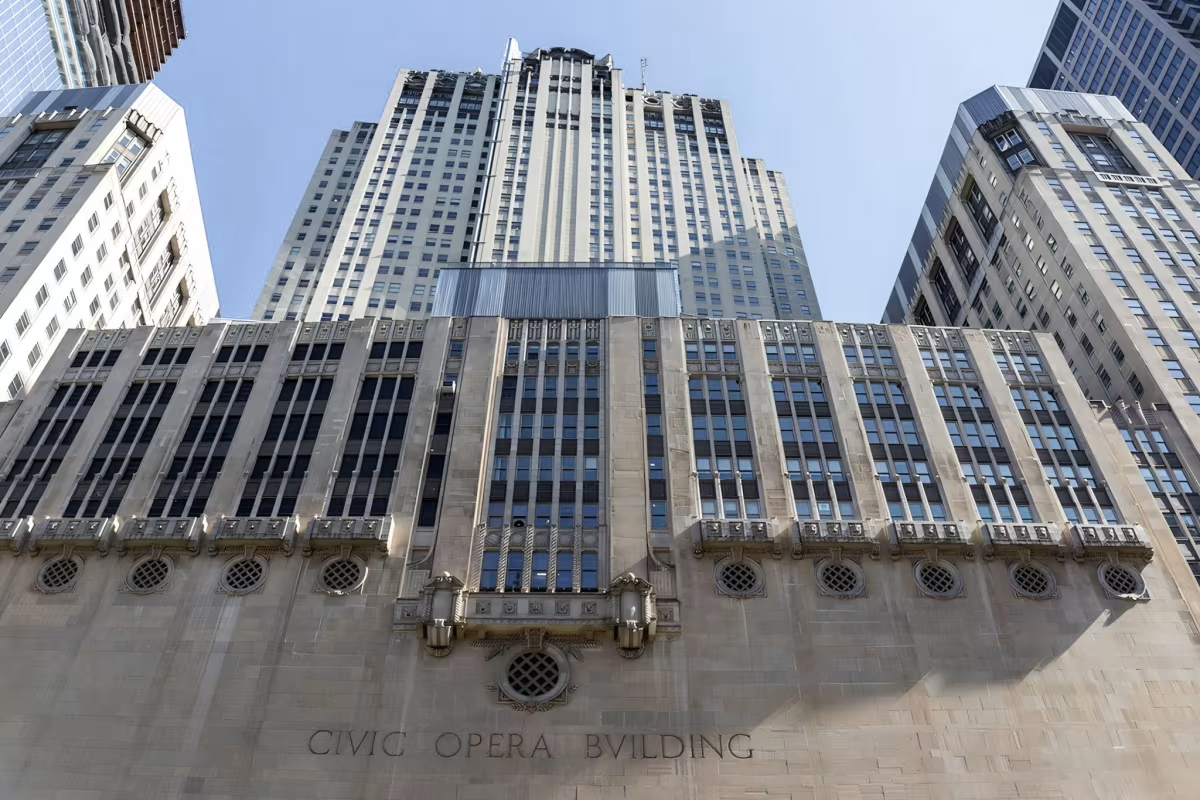Merchandise Mart vs Civic Opera House


Comparing the Merchandise Mart and the Civic Opera House is especially interesting because they share much in common. Both rise in Chicago, IL both were designed by Graham, Anderson, Probst & White, and they were completed just one year apart.
This overlap gives us a unique opportunity to understand how Graham, Anderson, Probst & White approached different commissions in the same urban context and historical context during a short period.
Height & Size
The Civic Opera House is clearly the larger tower of the two, both in terms of height and number of floors. It rises to 554ft (169m) with 45 floors above ground, while the Merchandise Mart reaches 341ft (104m) with 25 floors above ground.
Of course, each project may have faced different briefs or regulatory constraints, which we don't really know about and could also explain the outcome.
Architectural Style
Both the Merchandise Mart and the Civic Opera House were designed in line with the aesthetic conventions of the Art Deco style.
At the time, this style was at the height of its popularity. So Graham, Anderson, Probst & White followed what was in many ways expected at the time, producing designs that fit comfortably within contemporary architectural norms rather, than breaking with convention.
Uses
Both the Merchandise Mart and the Civic Opera House were designed to serve as commercial towers, and that has remained their main use since their completion, serving similar roles in the urban fabric.
Structure & Facade
Both the Merchandise Mart and the Civic Opera House rely on a Frame structural system.
A frame structure uses a grid of columns and beams to carry the building's loads. This frees the walls from structural duties, allowing for flexible floor plans and larger windows.
They also employ the same type of facade, a Masonry facade.
A masonry facade gives the building a heavier, more traditional appearance. It often conceals a frame structure behind it, creating the look of solid walls without carrying the main loads.
| Merchandise Mart | Civic Opera House | |
|---|---|---|
| Graham, Anderson, Probst & White | Architect | Graham, Anderson, Probst & White |
| 1928 | Construction Started | 1927 |
| 1930 | Year Completed | 1929 |
| Art Deco | Architectural Style | Art Deco |
| Commercial | Current Use | Commercial |
| 25 | Floors Above Ground | 45 |
| 104 m | Height (m) | 169 m |
| 372,000 m² | Usable Area (m²) | 915,000 m² |
| Frame | Structure Type | Frame |
| Steel | Vertical Structure Material | Steel |
| No | Facade Structural? | No |
| Marshall Field & Co | Developer | Samuel Insull |
| IL | State | IL |
| Chicago | City | Chicago |
| 222 Merchandise Mart Plaza | Address | 20 North Wacker Drive |